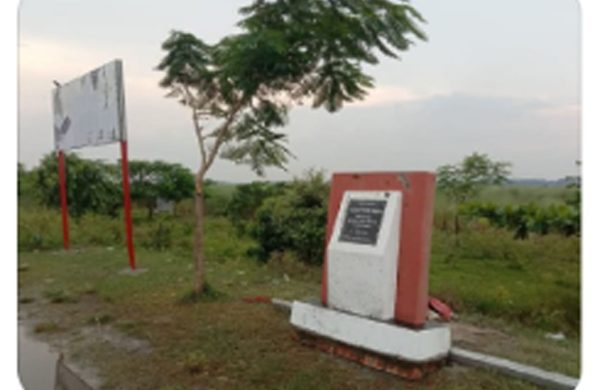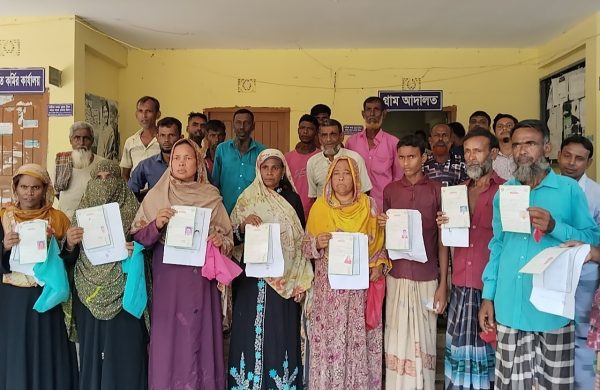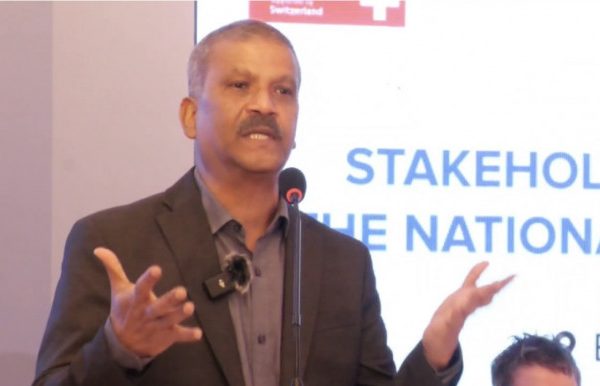Rising sea levels and coastal erosion in Bangladesh
- Update Time : Friday, May 16, 2025

—ATIFA ANJUMAN—
Bangladesh, a deltaic nation cradled by the Bay of Bengal, finds itself at the forefront of climate change’s most immediate impacts. Among the gravest concerns are rising sea levels and the intensification of coastal erosion, which threaten not only the nation’s geography but also its socioeconomic fabric. The Intergovernmental Panel on Climate Change (IPCC) has consistently flagged Bangladesh as one of the most climate-vulnerable countries globally. This vulnerability is not merely theoretical; it is playing out in real-time, as saline waters devour fertile lands and displace thousands of people annually. The coastal belt of Bangladesh, home to more than 35 million people, is already grappling with disappearing shorelines, vanishing islands, and communities forced into perpetual migration. The confluence of topography, population density, and under-resourced infrastructure renders the country a harbinger of what may await other low-lying nations in the decades to come.
Sea level rise in Bangladesh is driven by both global and regional factors. Globally, thermal expansion of seawater and accelerated melting of polar ice caps have caused oceans to swell. Regionally, subsidence-land sinking due to natural sediment compaction and human activity such as groundwater extraction-exacerbates this effect. The Sundarbans, the world’s largest mangrove forest and a UNESCO World Heritage Site, is emblematic of this crisis. Tidal surges increasingly breach embankments, while saline intrusion disrupts the delicate ecological balance that sustains both biodiversity and agriculture. The intrusion of saltwater has led to the degradation of rice paddies, the death of freshwater fish species, and the corrosion of infrastructure. In some areas, ground salinity has increased up to 10 times in the last two decades, rendering once-arable land barren. These changes are not merely environmental but existential, threatening food security and public health.
Coastal erosion is the sinister twin of sea level rise, often operating in tandem to wreak havoc on vulnerable communities. The coastal districts of Bhola, Shariatpur, and Satkhira have witnessed entire villages being swallowed by advancing waters. Riverbank erosion, exacerbated by erratic monsoonal patterns and rising tidal forces, has become more aggressive and unpredictable. Cyclonic storms-such as Aila, Sidr, and Amphan-have intensified in both frequency and ferocity, further destabilizing coastlines and displacing hundreds of thousands. The Brahmaputra and Meghna rivers, swollen by Himalayan meltwaters and torrential rains, contribute sediment and force that continually reshape the landscape. For families living near the banks, erosion is not a distant threat but a seasonal inevitability, prompting a cycle of destruction and relocation that undermines long-term community planning and development.
The human toll of these twin crises is profound and multilayered. Entire communities have become climate refugees, forced to migrate inland to overcrowded urban slums with little or no support systems. The United Nations estimates that by 2050, one in every seven Bangladeshis will be displaced by climate change, with sea level rise alone displacing up to 18 million people. This phenomenon is not only a humanitarian disaster but also a geopolitical flashpoint. Internal migration stresses already burdened cities like Dhaka and Chittagong, leading to heightened competition for jobs, housing, and essential services. Children from displaced families often drop out of school, while health risks-particularly waterborne diseases and skin infections from saline exposure-spike in affected regions. Moreover, women and girls bear a disproportionate burden, as displacement increases their vulnerability to exploitation, malnutrition, and domestic instability.
Despite these daunting challenges, Bangladesh has demonstrated commendable resilience and innovation in confronting climate adversity. The government has invested in early warning systems, cyclone shelters, and mangrove restoration projects aimed at reinforcing natural coastal defenses. Community-based adaptation programs, supported by international agencies, have introduced saline-tolerant crop varieties, floating vegetable gardens, and improved aquaculture practices. Yet, these efforts, while laudable, are often outpaced by the speed and scale of climatic shifts. Long-term solutions require not only local adaptation but also global mitigation. Bangladesh emits less than 0.5% of global greenhouse gases, yet suffers disproportionately from their effects. International climate finance, technology transfer, and legally binding commitments to emission reductions are essential to ensure that countries like Bangladesh are not left to shoulder an unjust share of the climate burden.
In sum, the rising sea levels and intensifying coastal erosion in Bangladesh are more than environmental anomalies-they are a clarion call to the world. They reveal the interconnectedness of global systems and the urgent need for collective action. For Bangladesh, the stakes are existential; for the world, they are instructive. If a country as densely populated and ecologically significant as Bangladesh cannot be protected or sustainably supported, the future holds bleak prospects for many other vulnerable regions. Coastal erosion and sea level rise are not isolated phenomena but the frontlines of a global battle for environmental justice and human dignity. The narrative unfolding in Bangladesh is not just a local tragedy-it is a global test of our moral, political, and ecological commitments.
————————————————————————————–
The writer is a Broadcast Journalist and News Presenter, Independent Television


















